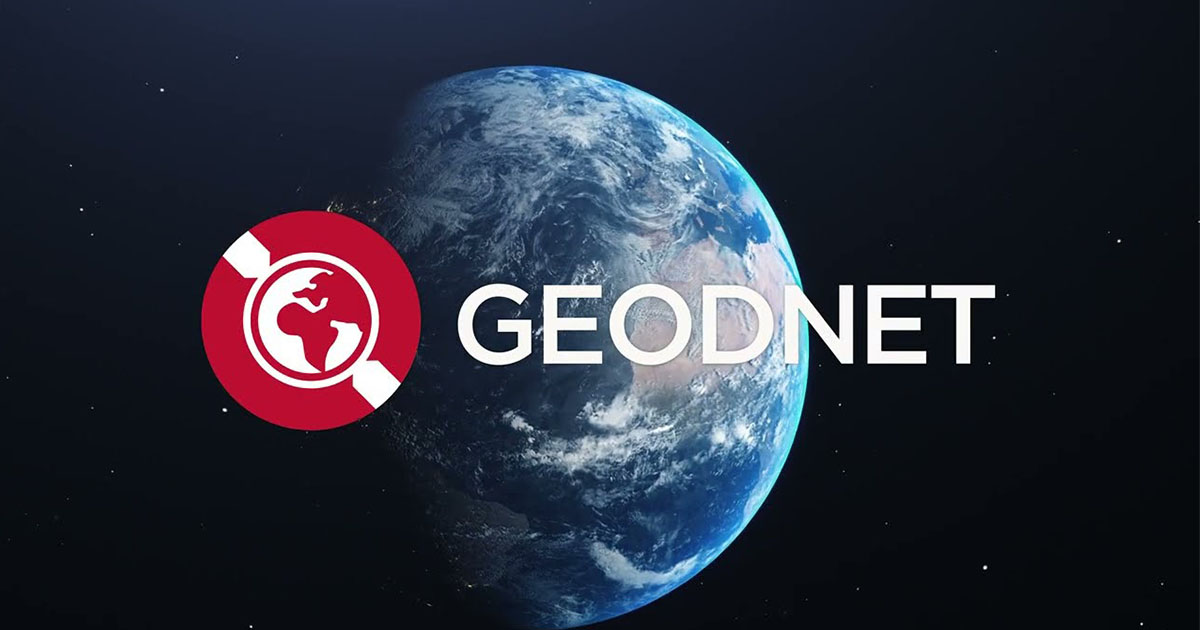
Geodnet: Using DePIN to Transform Precision Positioning in Autonomous Technologies

We recently spoke with Mike Horton, CEO and Founder of Geodnet, who shared the transformative vision behind his company’s work in high-accuracy positioning systems. As a pioneer in the Decentralised Physical Infrastructure Networks (DePIN) sector, Geodnet providers unparalleled positioning services for applications that require precise location data – ranging from robotics to drones and advanced agricultural equipment.
The Foundation and Vision of Geodnet
Mike, who spent his career in positioning and navigation technology, founded Geodnet to solve a significant challenge in the autonomous technology sector: the need for precise, reliable positioning data. Although GPS satellites offer foundational location services, their accuracy often falls short for high-stakes applications. Geodnet addresses this gap by creating a global network of terrestrial base stations that enhance GPS data accuracy, empowering autonomous systems to operate safely and effectively.
Through this network, Geodnet provides high-precision positioning services to a diverse set of industries. As Horton explains, Geodnet’s work impacts not only the evolution of autonomous technologies, but also the efficiency and productivity of traditional industries reliant on accurate spatial data.
Diverse Customer Profiles: Addressing Demand Across Industries
Geodnet’s utility extends across various sectors, with customers leveraging its high-accuracy signals to improve precision, reliability, and overall performance. A few notable customer profiles include:
- GPS Chip Manufacturers – Companies use Geodnet’s data to enhance their GPS chips with Real-Time Kinematic (RTK) positioning. This integration is essential across automotive, consumer, and industrial applications, providing a new level of precision in industries where spatial accuracy is critical.
- Precision Surveying and Mapping Equipment Providers – Surveying companies such as Bad Elf leverage Geodnet’s signal to offer high-accuracy measurements for users in construction, mining, and environmental mapping. Horton, for example, shared a case where Bad Elf’s equipment successfully relied on Geodnet’s signal in remote Wyoming, enabling surveyors to access accurate positioning data where no other RTK signal was available.
- Precision Agriculture – Agriculture is a high-impact sector for Geodnet, with tremendous potential for improved productivity through precise positioning. With only 27% of U.S. farmers currently using Precision Agriculture, accessibility to Geodnet’s signal could drive substantial industry growth. This coverage is vital for equipment like GPS-enabled tractors and harvesters, especially given Geodnet’s partnerships with institutions such as the USDA to expand rural access to positioning services.
- Smart Robotics – Autonomous systems such as lawn-mowing robots and drone fleets are increasingly reliant on centimeter-level positioning. Geodnet’s signal ensures that robots operate precisely within their programmed zones, enhancing safety and efficiency. The value here is clear: precise, autonomous tools reduce labor costs, operate sustainably, and deliver high-quality results—whether it’s a neatly mowed lawn or accurate aerial mapping from drones.
A Growing Network and a Strategic Path Forward
This year, Geodnet has scaled its network significantly, with active base stations increasing by 139% to reach over 9,500 nodes globally. Horton attributes this rapid growth to the DePIN community’s dedication and the power of Geodnet’s tokenomics. The DePIN model incentivizes community members to establish new base stations, strengthening the network’s overall accuracy and reliability. This incentive model, which aligns with Geodnet’s goals to increase its user base and meet demand, reflects the strategic approach to supply and demand balance seen in successful marketplaces like Uber and Airbnb.
Looking ahead, Geodnet is focusing its expansion on high-growth regions like Southeast Asia, Latin America, and areas of the U.S. Each of these areas has unique demand: Southeast Asia and Latin America, for example, have strong needs for precise positioning in agriculture, mining, and urban planning. Geodnet aims to reach 20,000 stations by 2025, bringing high-accuracy positioning to these underserved markets and driving substantial revenue growth.
The Role of Tokenomics and Community in Scaling
Geodnet’s success lies not only in its innovative technology, but also in its commitment to sustainable, growth-oriented tokenomics. By balancing incentives for miners with growing customer demand, Geodnet maintains a well-coordinated DePIN ecosystem that Horton compares to traditional two-sided marketplaces. The tokenomics approach encourages both supply and demand to grow in tandem, avoiding the pitfalls of imbalance seen in some networks.
For Geodnet, the community’s role is crucial: station operators earn token rewards and are essential in maintaining Geodnet’s reliable, high-accuracy signal. Horton emphasizes the importance of “passive” network participation, allowing base stations to function autonomously once deployed, minimizing maintenance and ensuring longevity. This design allows for long-term engagement, with base stations often lasting years in the field with little need for intervention.
Strategic Partnerships and the Future of Geodnet
Strategic partnerships are a cornerstone of Geodnet’s approach to growth. One notable collaboration is with Wingbits, where Geodnet and Wingbits introduced a multi-project mining device that serves both networks. This partnership exemplifies how DePIN platforms can benefit from resource-sharing across projects, offering miners more versatility and more earning potential while deepening inter-network collaboration.
In 2025, Geodnet plan to focus on increasing base stations and expanding geographic coverage. Horton’s vision is to establish Geodnet as essential infrastructure, creating a “high-speed positioning train” that accelerates growth in underserved regions. These expansions align with Geodnet’s goal to reach $10 million ARR and strengthen its position as a primary enabler of autonomous technologies worldwide.
Geodnet’s journey showcases the transformative potential of decentralized infrastructure. Horton’s insights underscore how reliable, precise positioning services can drive the adoption of autonomous systems and improve efficiencies across industries. As Geodnet advances, it exemplifies the promise of DePIN, where community-driven infrastructure meets critical industry needs, fosters innovation, and creates value on a global scale.
For those following the DePIN landscape, Geodnet’s strategic focus on customer diversity, geographic expansion, and tokenomics makes it one to watch. With its strong community foundation, dedicated partnerships, and a clear vision for growth, Geodnet is on a path to becoming a cornerstone of autonomous technology and high-accuracy positioning services.
James Gould

